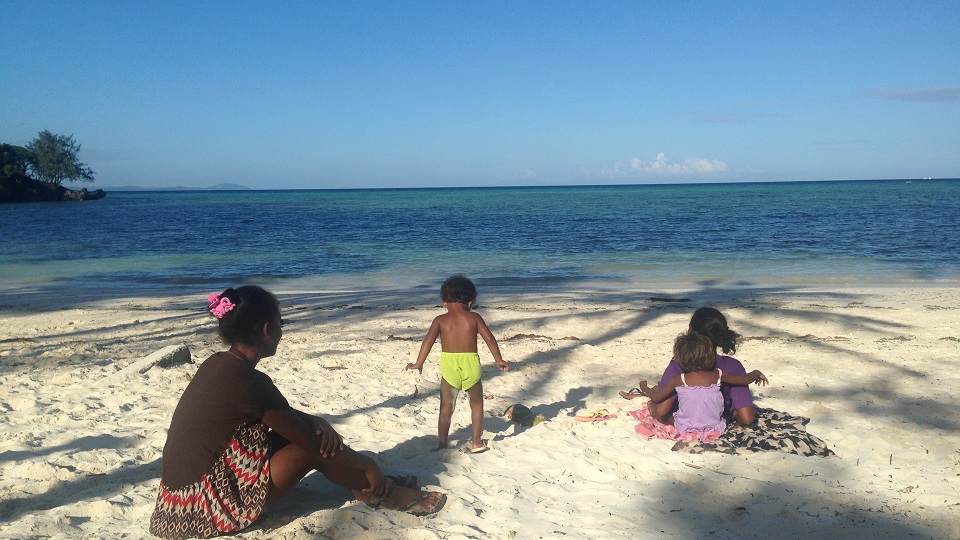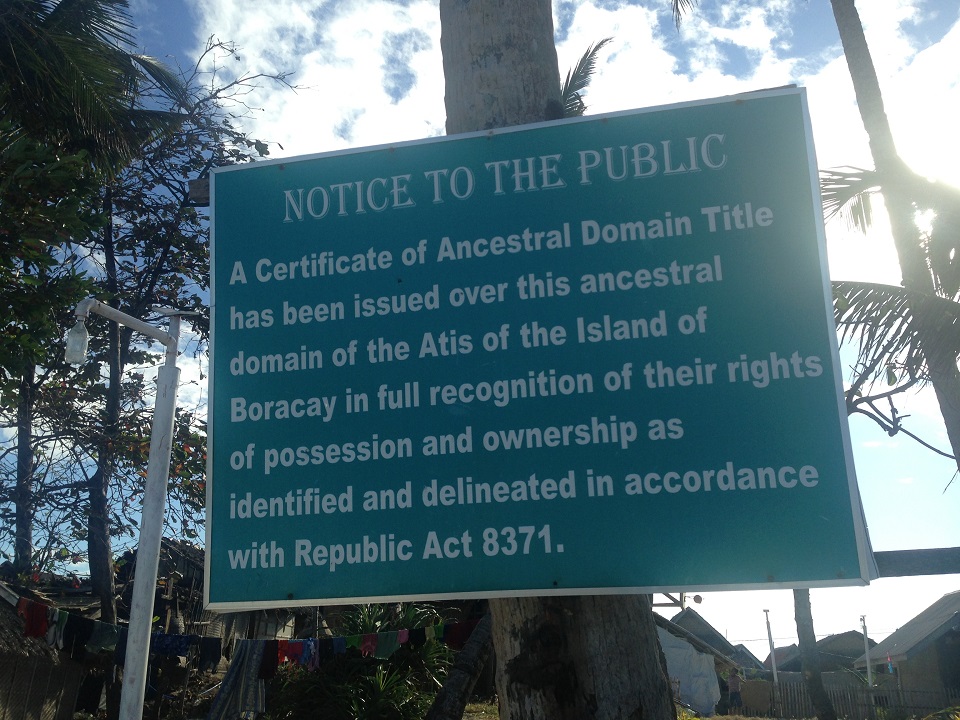Boracay’s Ati kids and the power of knowledge
It was a perfect day to swim in any one of Boracay's famous beaches, with their powdery white sand, blue waters and “ever after” party mood.
But Ina Morillo would rather spend her weekends in a quieter part of the island.
By an equally beautiful seaside is a village, on land recently awarded to the Atis by the government as part of their ancestral domain.
Ina, the daughter of a resort owner, is a former technical consultant for NEDA and a teaching fellow at the University of the Philippines School of Economics. She comes here every weekend as a volunteer teacher for the Ati kids.
She teaches math and English to the young members of the community considered the first to have settled on the island.
Ina is warmly welcomed by her students in the empty hut they use as a classroom. Carrying chairs, the children gather near "Ate Ina" as she draws on a movable blackboard with colored chalk. The lesson for the day: fractions.
Ever since they started a business on the island, Morillo and her family have known the Ati community. Ina also volunteered as a tutor for the Catholic parish’s reading and writing class for older Ati students.
"I distinctly remember that enriching feeling of teaching, so when the opportunity arose for me to take a break from my work in Manila and come to the island to help manage our business, I spoke to Nanay Delsa, the Boracay Ati chieftain, about my intention to teach the kids more regularly," said Ina.
"She warmly gave me her approval and, since then, I come every week and visit the Lupaing Ninuno as a volunteer teacher to the kids."
Ina begins her class with an exciting activity where she can gain their attention and natural curiosity before proceeding with a lesson in math or English—usually math. “I can sense the Ati kids find math very intuitive,” she said.
Ina, who also taught Economics at UP, knew she had to make math relevant to her young students. So she uses examples from their natural surroundings and their way of life, such as coconut trees and Boracay's waters, for math problem solving.
Another example of this, said Ina, is drawing on the kids' experience of learning to share with their siblings for the lesson on fractions. "This gives them an intuitive understanding of comparing fractions as well as adding and subtracting parts."
Ina mentions one student in particular, Angeli, who excels in the subject. "She has corrected me once or twice, and I couldn't be prouder as a teacher," she said.
In the initial stage of her weekly teaching Ina felt she couldn’t get through the kids the way she hoped to. So she developed a teaching strategy particularly for them.
Ina said it was a good challenge, and she never made attendance to class compulsory. "I wanted them to also want to be there. The 'unga' [children] taught me to understand that teaching truly is very dynamic."
Ina said her intent is to not be a figure who comes and goes, but to be someone who genuinely wants to know them and share what she knows, and at the same time is eager to learn new things from them.
Over the months Ina adjusted and modified her technique, and the number of students she had grew to about 25 to 30 students. "Their wide-eyed reaction to their science experiment, and curiosity as to how Bulkan Bura [the name they gave our make-believe volcanic eruption] made me feel that I am now very blessed to be with them, in that cross between being their sister and their teacher," she said.
Atis' struggle
Some years ago, a certificate of ancestral domain title was issued in full recognition of the Atis' rights as the rightful owner of their ancestral domain in Boracay.
But the Ati community continue to fight for their ancestral land, which was taken away from them by corporations and families over the years.
A few years back we did a documentary, "Sigalot sa Paraiso" for GMA News TV’s "Brigada." We met several Atis who said they experienced discrimination on the very island of their ancestors.
One of those who spoke and fought bravely for the rights of the Atis was tribal youth leader Dexter Condez. He was gunned down in 2013; his killing is believed to be related to his very active role in fighting for their ancestral land.
Dexter was one of the very few Atis who have had the privilege to study and finish college, and he has become a symbol of hope for many young people in the community.
Ina said she could sense that the Ati children are very eager to learn and be given the opportunity to broaden their education just like Dexter. "As someone who shares in their advocacy, [I feel] that the Ati children represent the promise that all those years of struggle for their land, as well as the precious life of Dexter, the murdered youth leader of the Ati community, have not been in vain," she said.
"I can feel they value learning because it is part of the fruits that the sacrifice of their parents, grandparents and elders have enabled for them," she added.
Ina feels the biggest misconception about the Ati community is from people who come to the village absorbed with the idea of how unfortunate the Atis are either because of their poverty or their struggle for land.
She said she had come to learn that "their whole struggle—their identity, land and their way of coping in the changing environment—is so deeply woven in their joys, pains, loss and dreams that you will be humbled by their wisdom."
The Ati village in Boracay is slowly becoming a tourist spot because it's just a tricycle ride from whichever station you are staying.
Some visitors have donated books or other materials to the village.
I visited it recently. It has become a really livable and peaceful community where Ati boys play basketball in their own court wihout anyone bothering them.
Nanay Delsa, whom I had the chance to meet during our feature about their ancestral domain plight, said she is very thankful for all the help volunteers like Ina are doing to enrich the minds of their little Atis. She said it will empower their minds as their fight to protect their ancestral land continues.
In spite their government-awarded ancestral domain, several families are still pursuing legal cases against the Atis to get the land from the Atis again.
Nanay Delsa said her hope is that by learning math, English and science, the younger Ati generation may one day be equipped to protect their ancestral land without fear that some people may question their ability to think and discern.
But there is more to Atis, according to Ina. "One can come and enter the Ati village with material things to share, but the depth and profound lessons you can learn from them if you truly spend time with them and share a few laughs and even some tears is invaluable."
The real treasure of Boracay
In the end, Ina said, the Atis may be less apparent than the island's famed white sands.
But before anyone else had any claim whatsoever to any parcel of land on the island paradise, there was a people who already knew Boracay well and respected the island for what it is.
Without a doubt, said Ina, "the Ati community is Boracay's real treasure." — BM, GMA News









